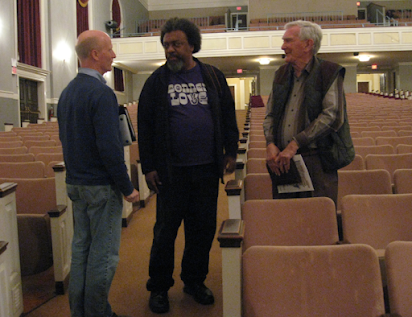Dedicated to the memory of Jim Keith,1935-2021
In 2004, author Timothy Tyson commented on the 1970 killing of Henry D Marrow in Oxford NC that is the subject of his book, Blood Done Sign My Name:
“We needed a new social system… the human condition is not always amenable to policy programs… what needed doing was off the chart of political possibility… about 65% of polled Americans said MLK and the Civil Rights Act of 1964… (were) going too far, too fast, with Jim Crow still in place… I can’t fault what white liberals were trying to do, it’s just that it didn’t matter.”
The idea of community engagement and some other terms we’ll cover, like experiential learning and service learning, and the term which we hear spoken over and over and over again on college and university campuses, “community”, came about following the social and political progress of the 1960s and Civil Rights Movement. The understanding then by the overwhelming white and privileged institutions that made up America’s colleges and universities was that they, too, had to respond in order to be responsible agents working towards a more democratic America.
Yes, of course there was very serious pushback.
In 1995 Edward Zlotkowski’s titled article, Does Service-Learning Have a Future? says it all.
The pushback was not coming from right-wingers, white nationalists, or the Republican Party. Back then the resistance was found deep within the layers of colleges and universities and the people who ran them. A few years ago Zlotkowski delivered a sobering update at a Campus Compact conference in which he accused higher ed of dismantling its community engagement and service learning centers in favor of Website slogans and various feel-good volunteer programs that sent rich kids off campus to work with poor people.
Guilford College was in fact part of the service learning and community engagement movement very early on. Although in its very long history Black students were only recently admitted, under individuals like Jim Keith who served in Guilford’s administration, and President Bill Rogers, the school moved closer and closer to what we’d today call a larger social justice commitment. To use today’s academic jargon, Guilford sought to deliberately act as a steward of place, a good neighbor to the immediate communities, neighborhoods and people, which then and now include considerable numbers of Black and other minorities historically ignored and underserved. The College’s response seemed consistent with Tyson’s criticism. In other words it wasn’t enough to say you cared about social issues and inequality, colleges and universities had to be part of the solution.
Historically, the Bonner Scholars program and the Bonner Center were part of the commitment that Guilford and a cohort of other colleges accepted. To be very clear and set the right context, progressive colleges and universities across the US were responding with programs and projects of their own. Bonner was one among many efforts. The Bonner Foundation, a national organization, is one the oldest such efforts, and it is instructive to note that its wealthy founders were interested in addressing Appalachian poverty and the inability of mostly poor white youth to attend college and to return to their communities with the skills to transform them. Guilford, although it’s located outside Appalachia, signed on. The requirements for receiving scholarships were based on students’ financial need and very importantly, a proven track record of community service. This was a kind of scholarship that was unique. Less about GPA, race or ethnicity and more about readying young people to engage in the larger democratic process of community building and empowerment. It was all about reducing the divide between town and gown, intellectual elites and the communities of which they were a part.
A special Guilford note: Jim Keith, who died just a few months ago here in Greensboro was something of a giant in the service learning / community engagement world. Few know that he was an important figure in the creation of Campus Compact and the Bonner Foundation.
Get this:
“Associate Dean of Students, Director of Experiential Learning, Director of Career Development and Placement, and Adjunct Assistant Professor of Sociology at Guilford College over a 12 year span.”
Twelve years! Jim did awesome work helping to steer the College in the right direction.
And this: “Jim served as Program Officer for The Corella and Bertram F. Bonner Foundation, where he helped design service learning programs for higher education programs across the country.”
Here was a man who helped put service learning on the national map! Living just a couple of blocks from where I live! When Guilford hosted one of the annual Bonner conferences for Bonner schools a few years ago, we were pleased to see Jim come out and celebrate with us.
Judy Harvey became the first Bonner director and until his termination, James Shields, guided the program and Center for years. During the short time I spent with the Center under James I was gratified to see the vision of service learning and community engagement continue. Back then the College gained a strong reputation for welcoming first generation, refugee, undocumented, immigrant, Black, Native American, LGBTQ and other minorities. But Bonner was not a “minority” program. It was a larger societal and institutional commitment to social change.
I hope I’ve sketched out for you a historical context for community engagement in Guilford’s past. And I hope you understand why it matters, not just on your campus, but as an ongoing response to the monstrous social and economic inequalities we see going on today.

